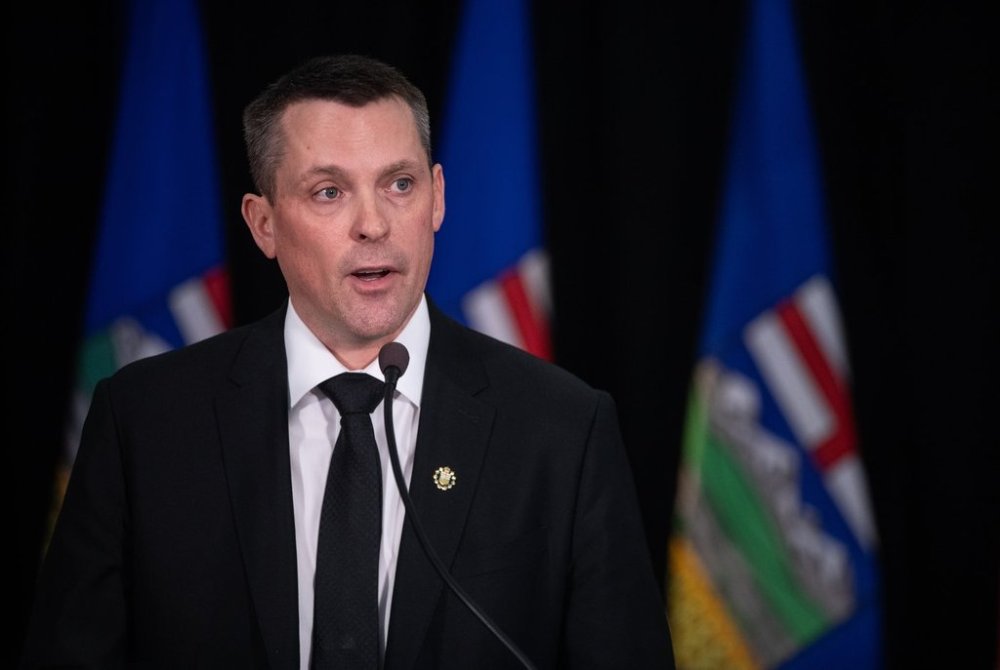Talks stall between Alberta teachers, government in provincewide strike
Advertisement
Read this article for free:
or
Already have an account? Log in here »
To continue reading, please subscribe:
Monthly Digital Subscription
$1 per week for 24 weeks*
- Enjoy unlimited reading on winnipegfreepress.com
- Read the E-Edition, our digital replica newspaper
- Access News Break, our award-winning app
- Play interactive puzzles
*Billed as $4.00 plus GST every four weeks. After 24 weeks, price increases to the regular rate of $19.00 plus GST every four weeks. Offer available to new and qualified returning subscribers only. Cancel any time.
Monthly Digital Subscription
$4.75/week*
- Enjoy unlimited reading on winnipegfreepress.com
- Read the E-Edition, our digital replica newspaper
- Access News Break, our award-winning app
- Play interactive puzzles
*Billed as $19 plus GST every four weeks. Cancel any time.
To continue reading, please subscribe:
Add Free Press access to your Brandon Sun subscription for only an additional
$1 for the first 4 weeks*
*Your next subscription payment will increase by $1.00 and you will be charged $16.99 plus GST for four weeks. After four weeks, your payment will increase to $23.99 plus GST every four weeks.
Read unlimited articles for free today:
or
Already have an account? Log in here »
EDMONTON – Alberta’s finance minister says there’s still a major divide between what the union representing striking teachers is asking for and what the government is willing to spend, while teachers say they aren’t asking for the world.
The provincewide strike, affecting about 740,000 students across 2,500 schools, was in its seventh day Wednesday.
A new contract proposal from the Alberta Teachers’ Association was the subject of a bargaining meeting Tuesday, the first since its 51,000 members walked off the job Oct. 6. But the meeting ended with no future sessions scheduled.

Nate Horner, in an interview with Corus Radio host Shaye Ganam, said the union “shot for the moon” with its latest proposal, as it would require almost $2 billion more in spending than the government had set aside for a deal.
“In that sense, I’m sure that their membership would be pleased with this ask,” Horner said Wednesday.
He added the government’s spending cap for a contract is $2.6 billion, which would be spread out over four years.
“I was hoping for something that was a little more reasonable in the realm that we’ve already worked on over the last year,” the minister said.
The main sticking points in the dispute have been wages and working conditions.
Horner said the union’s proposal boils down to a bigger salary bump than the government previously offered and action on classroom issues, including caps on class sizes.
Union president Jason Schilling said its proposal isn’t an extravagant ask.
“The government wanted to know what teachers were asking for. We showed them,” he told a news conference.
The last offer from the government, overwhelmingly rejected in a vote by teachers late last month, included a 12 per cent pay raise over four years and a government promise to hire 3,000 more educators to address overcrowded classrooms.
Horner said the province won’t budge on salaries, saying its last offer was “extremely fair” and in line with recent contracts the province has signed with other public sector unions.
“I don’t think there’s much room there,” he said.
He also said it’s likely the government would table back-to-work legislation later this month when the legislative assembly returns.
“If this is still going when we start session on (Oct. 27), I’m assuming we will look to try to get kids back in school quickly,” he said.
“I know the parties have left it open to continue to talk, but we’re somewhat running out of time here.”
Horner later said in a statement that the government would like to get back to the bargaining table this week.
“The ATA and their members need to be prepared to come to a clear, concrete solution rooted in reality,” he said.
Schilling said the union is being realistic.
“You want reality? Go look at our classrooms across this province,” he said, adding that a cap on class sizes could be phased in over time.
“To say that we are not rooted in reality, we are … dealing with the ramifications of the failure of this government to do right by the students of this province, their parents and the rest of Alberta.”
Premier Danielle Smith, at an unrelated news conference, questioned how the province would enforce a cap on class sizes.
Smith said with the current number of working teachers and enrolled students, each classroom shouldn’t have more than 21 students. Some striking teachers have said they regularly have more than 30 and others say the number is much higher.
“Why it is that the resources that we have are not being allocated in the way we would expect,” Smith said. “That’s what we need to look into.”
Opposition NDP Leader Naheed Nenshi said he also thinks it’s the United Conservative Party government that needs to be realistic.
“They’re not taking this seriously,” Nenshi said.
“(Teachers) live in a reality where the public education system is crumbling, where kids, whether they have special needs or not, are not being served.”
Nenshi said the NDP would oppose back-to-work legislation, calling it an unfair tactic.
“It’s not right, it’s not fair and, most important, it doesn’t solve the problem that parents, teachers and students have highlighted,” he said.
This report by The Canadian Press was first published Oct. 15, 2025.
— With files from Aaron Sousa in Edmonton

